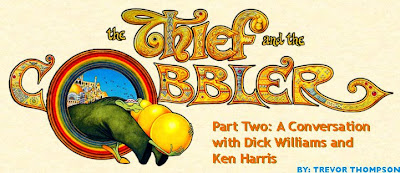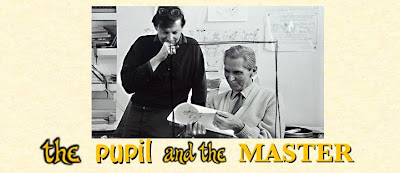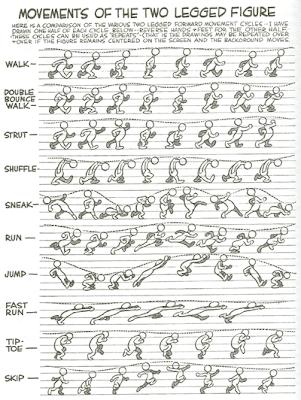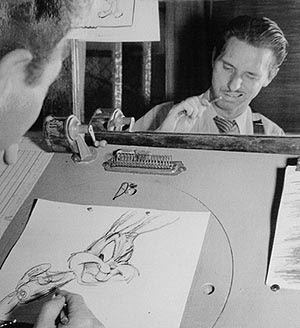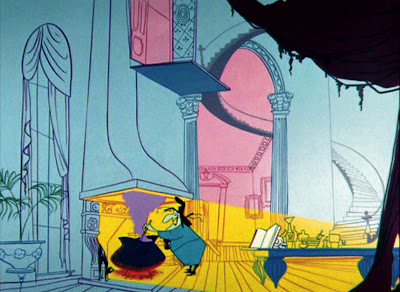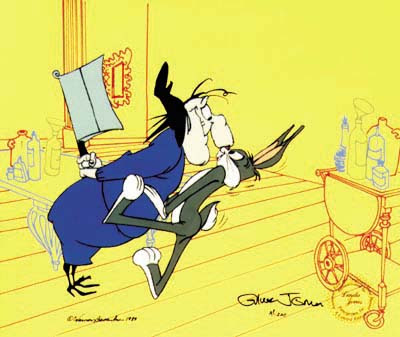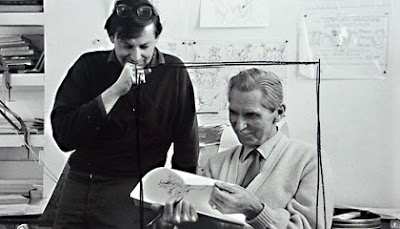
Over at his blog,
all kinds of stuff, John Kricfalusi recently broke down the construction of two well-known characters, that of Rocky and Bullwinkle. He talks about how their simplicity is deceptive, and shows how construction is used even with UPA's simple style, but he also points out how negative space has an effect on the staging of a drawing.

When he put this drawing up, it was cited as an example of mushy construction. This is what John said about it specifically:
"Here is a picture made by someone not conscious of the usefulness and appeal of negative shapes."
I saw what he was talking about, but wondered what it would have looked like if the drawing had been drawn more, as John puts it, 'consciously'. Since I am trying very hard to learn from this man, I did what I believe he wants us all to do: try to evaluate the drawing yourself.
I immediately thought that, what I would call 'the staging', was jumbly and unnatural and I noticed that if Natasha was positioned slightly further back from the light and Boris were in the lower right, it would read better, plus there would be more negative shapes.

I very quickly sketched the basic shapes of the drawing ( and didn't get the proportions of the table right, ) though I don't know what John would say, but I felt it read better. Am I wrong?

Again, these are just my theories based on what John's been teaching. Sometimes stuff being 'too even' can get boring, but I felt that the original drawing was too jarring, so I went the opposite way. Tell me what you think, friends.
- trevor.
















